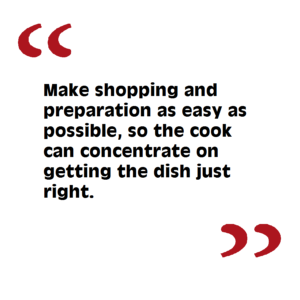Your time in culinary institutes will teach you the skills and methods necessary to develop your own dishes. Among the most important skills you can learn is directing others in how to make your signature dishes. Whether you are running a kitchen or writing a food blog, communicating with clear, direct written instructions is essential for a chef. Here are three tips to consider as you draft and revise your recipes:
1. Take detailed notes
You may think you know every step along the way to searing a fish or mixing the perfect tomato sauce, but it’s easy to forget the details. That’s why it’s essential to keep a notebook nearby as you prepare the dish. The Food Network advised writing down ingredients, measurements, cooking times and any handy tips that come to mind. You may find that you use more of a spice than you realized or that preparation takes longer than you anticipated.

Nothing is more frustrating for a cook than realizing the ingredient list for a recipe is incomplete or inaccurate. If your readers don’t have all the supplies they need before they get started, the results could be disastrous. Make shopping and preparation as easy as possible, so the cook can concentrate on getting the dish just right.
The Kitchn recommended listing the ingredients in the order they are used, preferably with the most important ones first. It may be helpful to organize the list into multiple categories, such as splitting up the items required for a marinade and for a sauce. Keep the units of measurement consistent, and don’t forget to mention any necessary preparation, like chopping vegetables.
3. Make directions clear and specific
Keep your writing concise, avoiding long sentences or unnecessary jargon. Your reader should be able to glance at the recipe and easily see what comes next in the cooking process. Wherever possible, give exact times and measurements. Leave any additional notes on possible variations or advanced cooking techniques for the end of the recipe.
As BBC Good Food pointed out, it’s an excellent idea to have someone else read through your recipe and offer feedback. A second pair of eyes may notice an instruction that is difficult to understand or identify a missing step.
A chef should be able to write recipes with focused directions that even a novice can follow. Practicing your writing skills can make a huge difference in communicating your ideas to fellow culinary professionals and building your reputation.


